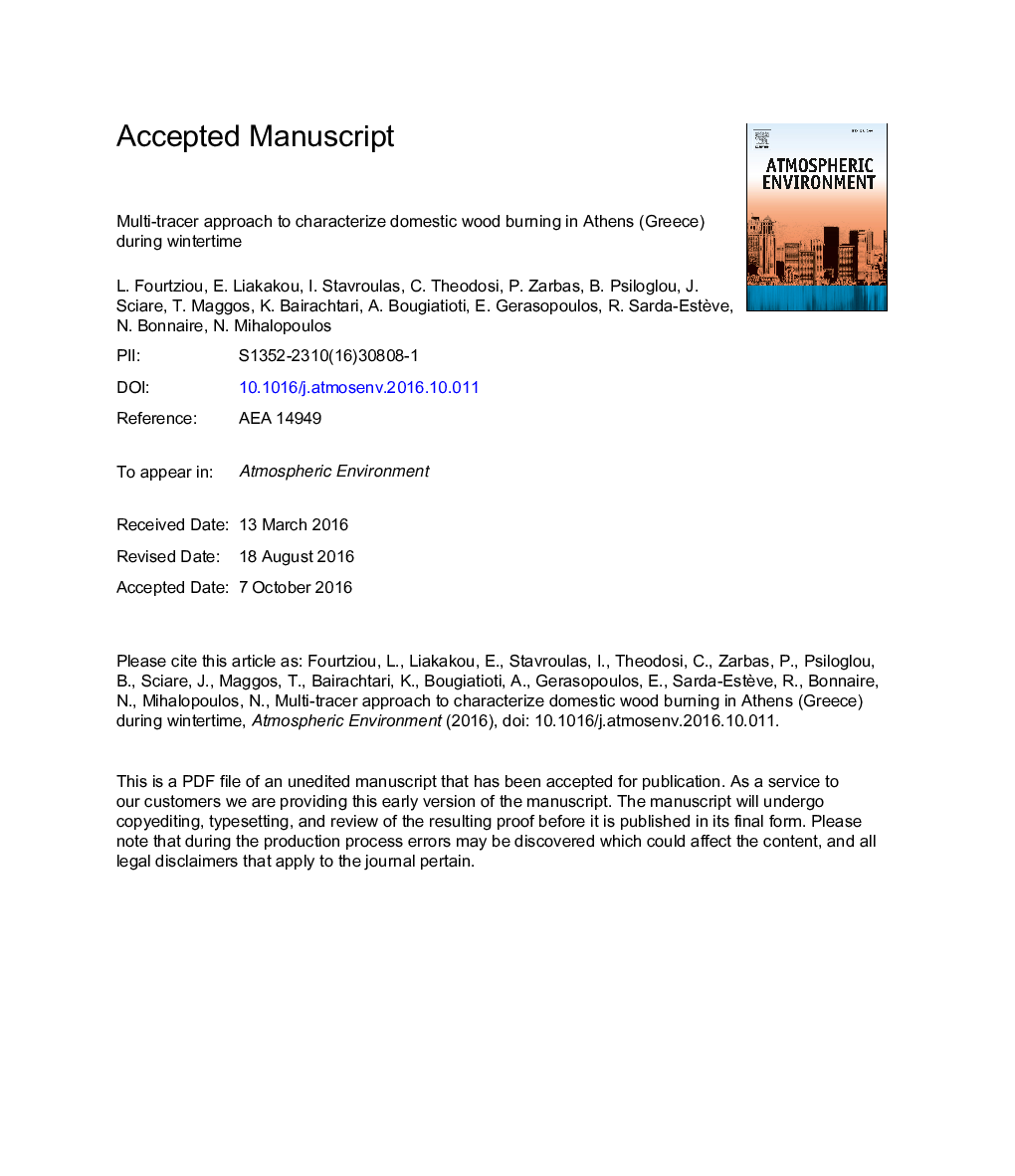| Article ID | Journal | Published Year | Pages | File Type |
|---|---|---|---|---|
| 5753497 | Atmospheric Environment | 2017 | 40 Pages |
Abstract
During the last years the atmosphere of the Great Athens Area (GAA) and other Greek cities is burdened from extended residential biomass burning for heating purposes. In this work, a series of near real-time and off-line biomass burning tracers are analyzed during intense wood burning events in Athens. The measurements were conducted at an urban background site located in the center of Athens, and in the heart of wood burning activities (winter 2013-2014). The measured tracers include high resolution measurements of non-sea salt potassium (nss-K+), wood burning black carbon (BCwb), the m/z 60 fragment associated with levoglucosan and monosaccharide anhydrides (levoglucosan, mannosan and galactosan) determined on selected filter samples. The suitability of these tracers was evaluated when the prevailing meteorological conditions with low dispersion and deposition mechanisms (low wind speed, absence of precipitation) were associated with high biomass burning emissions at nighttime. During the severe smog periods, the levels of K+, BCwb, m/z 60 and levoglucosan were up to 2.2 μg mâ3, 12.5 μg mâ3, 3.4 μg mâ3 and 8.6 μg mâ3, respectively, higher by a factor of at least two, relatively to the non smog periods due to biomass burning. Correlations between biomass burning tracers as well as between monosaccharide anhydrides provided information about the type of material and wood being burned.
Related Topics
Physical Sciences and Engineering
Earth and Planetary Sciences
Atmospheric Science
Authors
L. Fourtziou, E. Liakakou, I. Stavroulas, C. Theodosi, P. Zarmpas, B. Psiloglou, J. Sciare, T. Maggos, K. Bairachtari, A. Bougiatioti, E. Gerasopoulos, R. Sarda-Estève, N. Bonnaire, N. Mihalopoulos,
